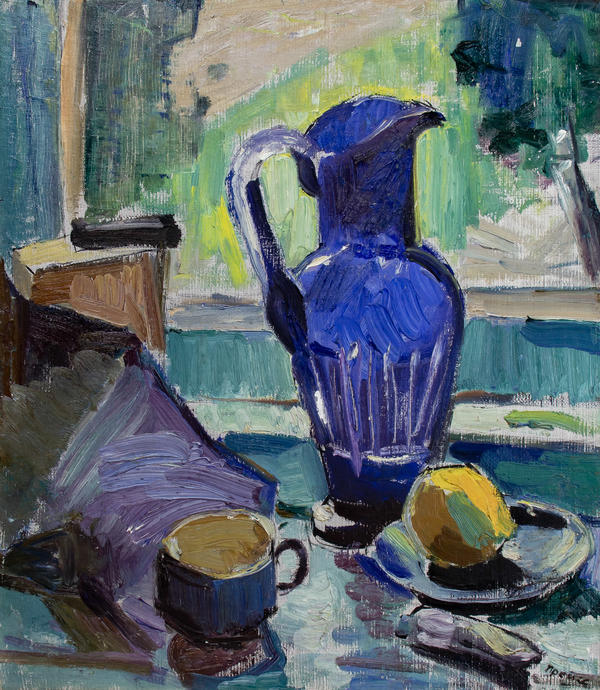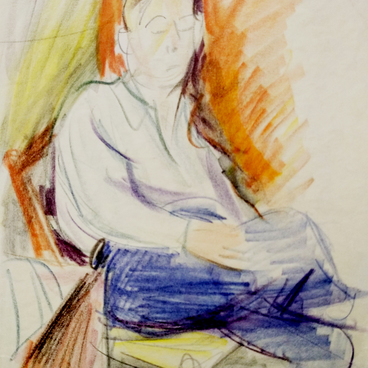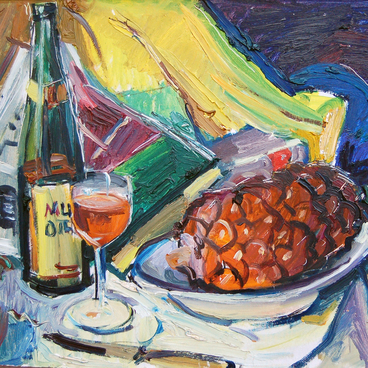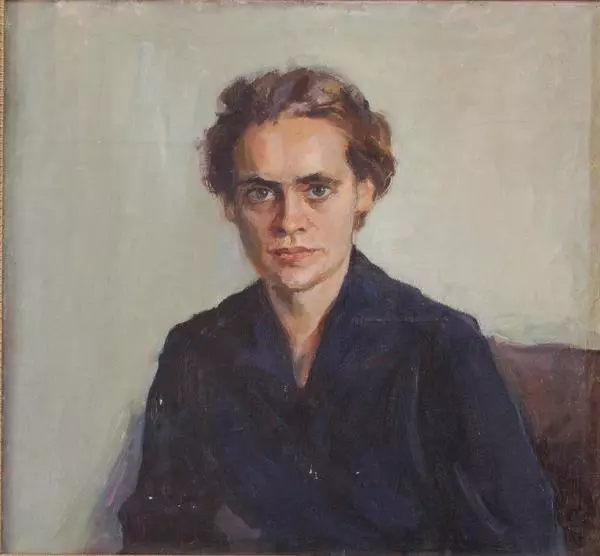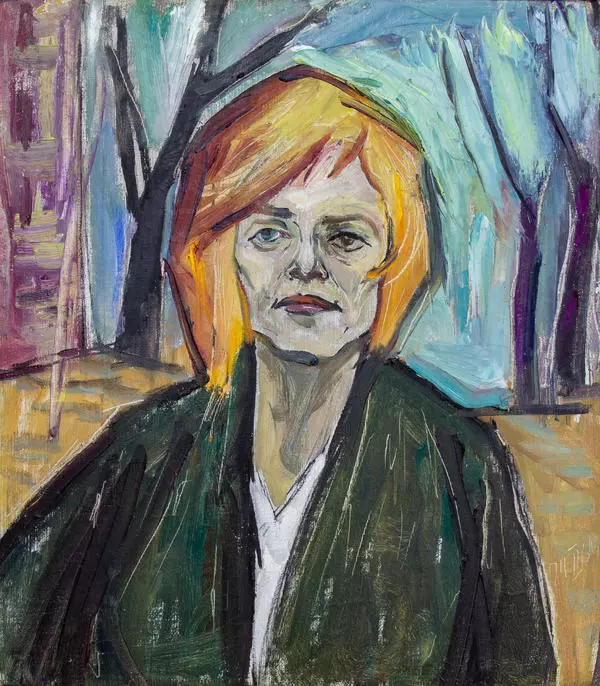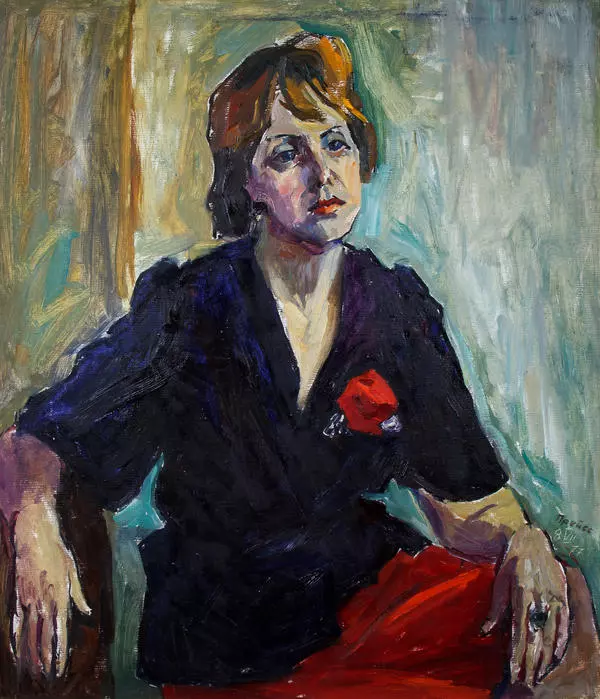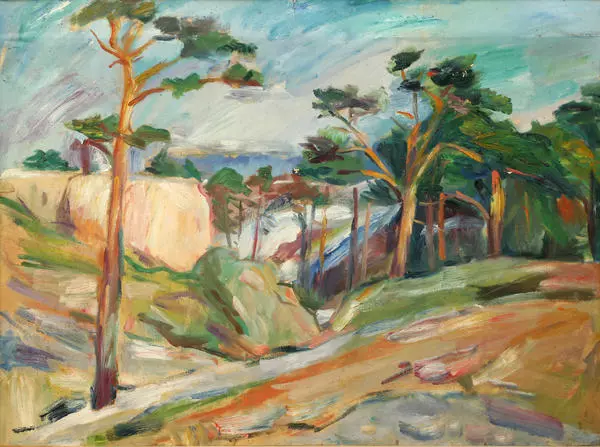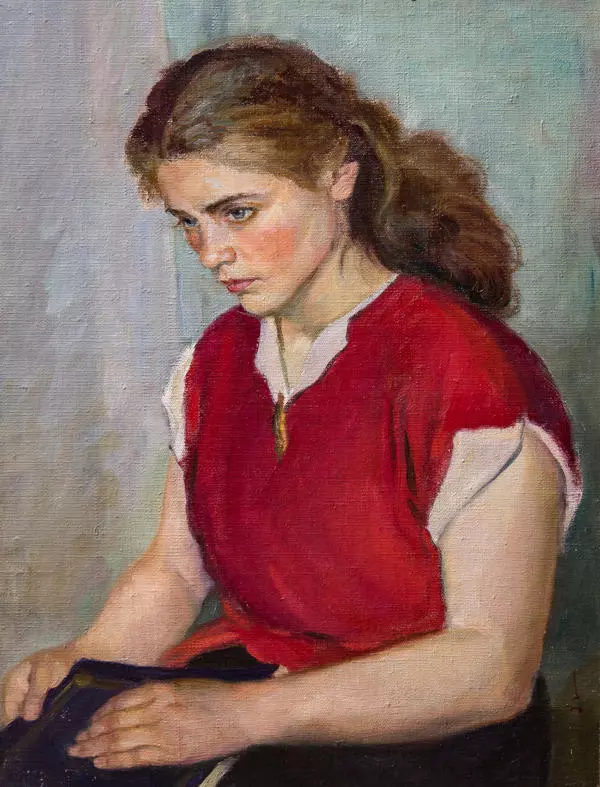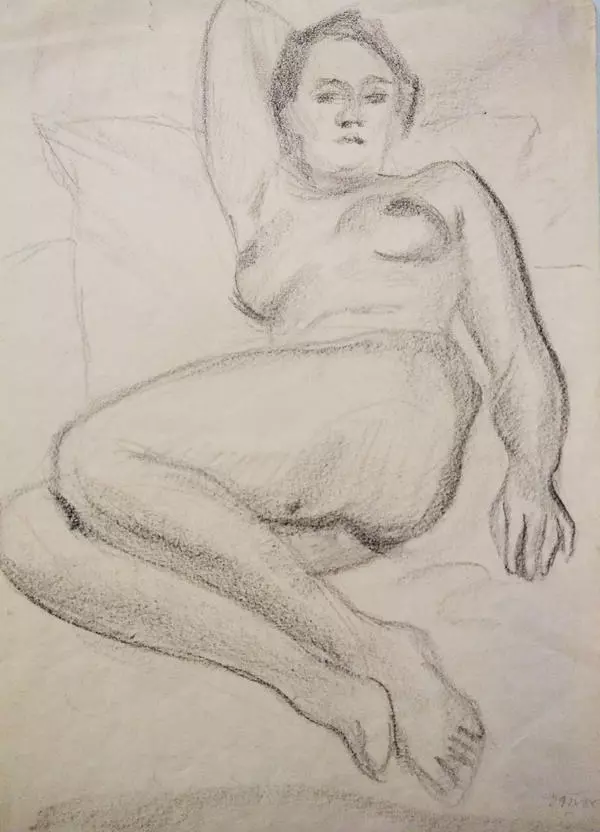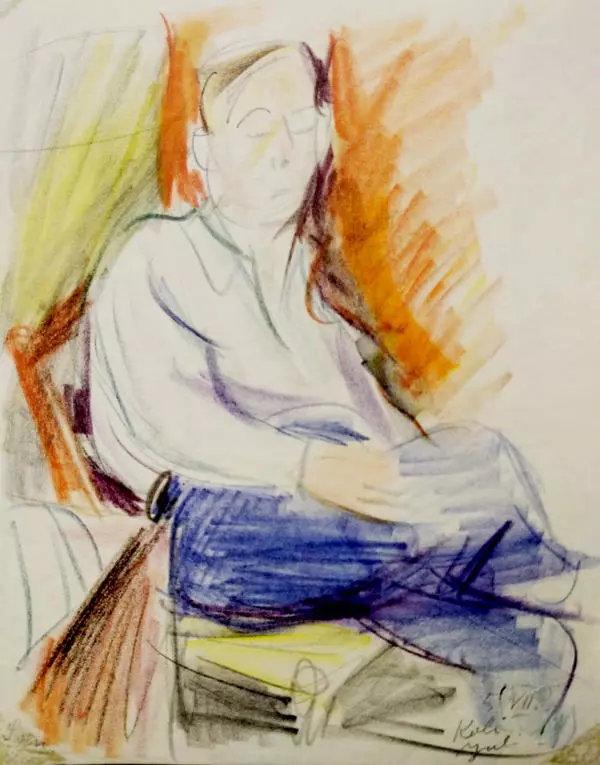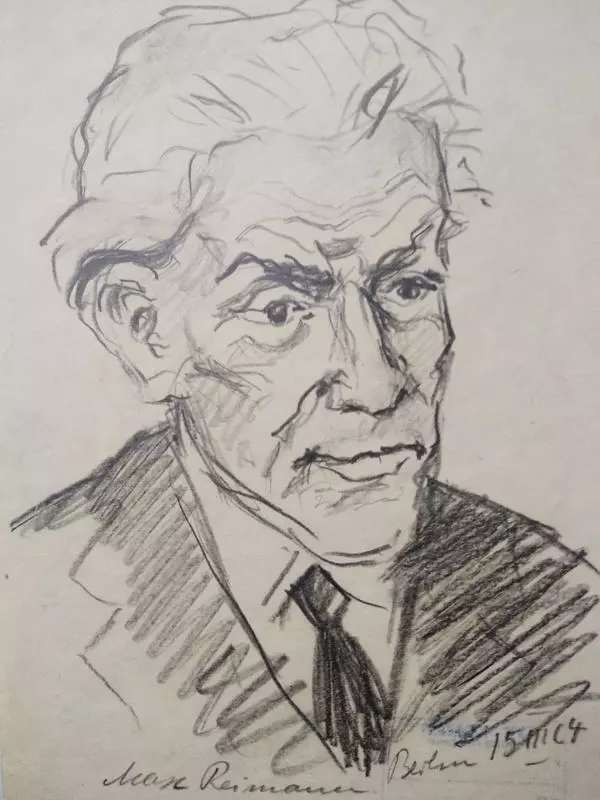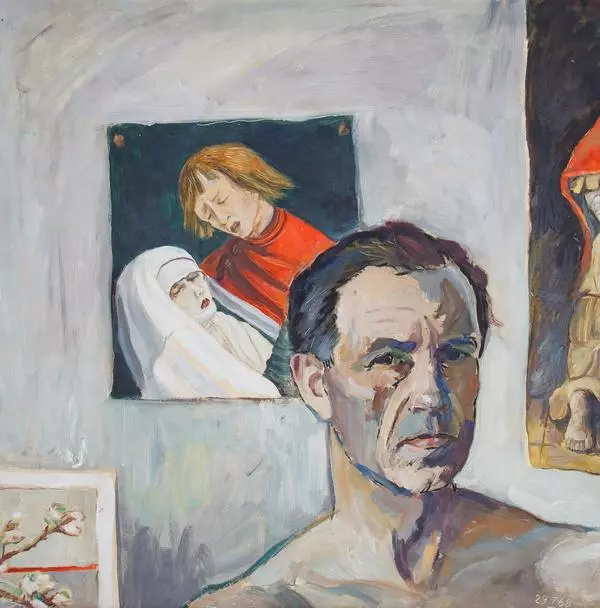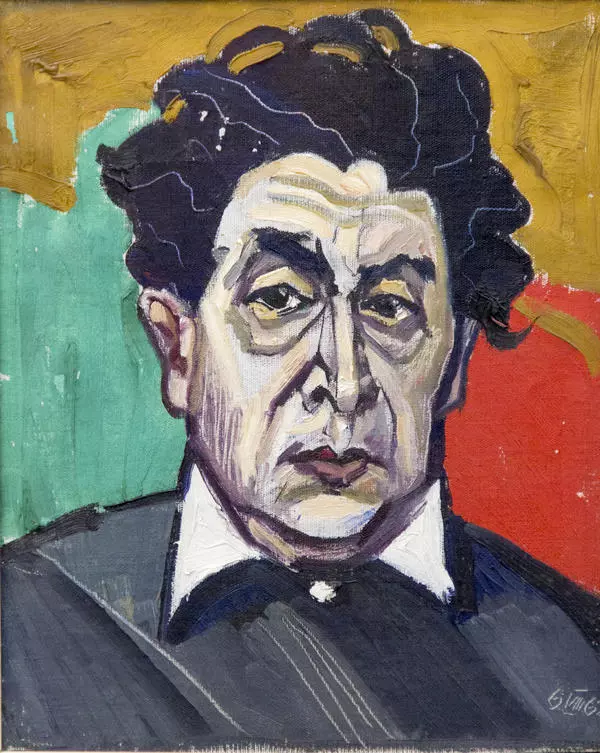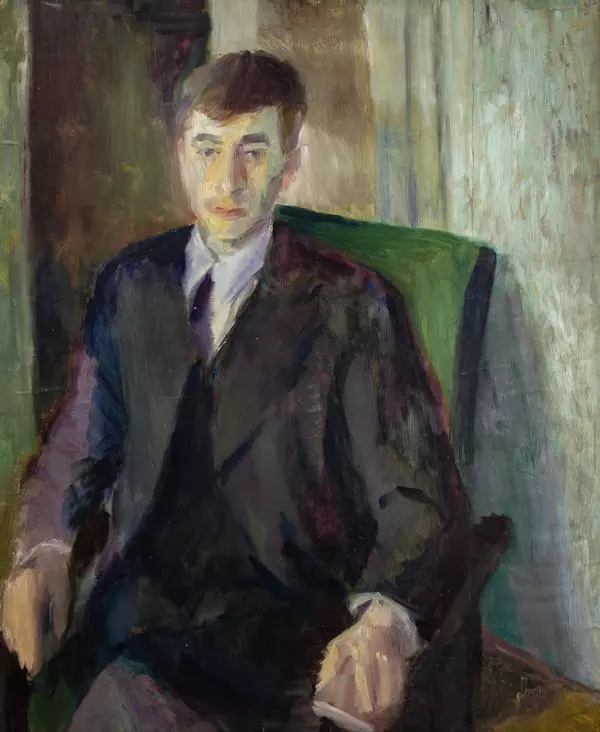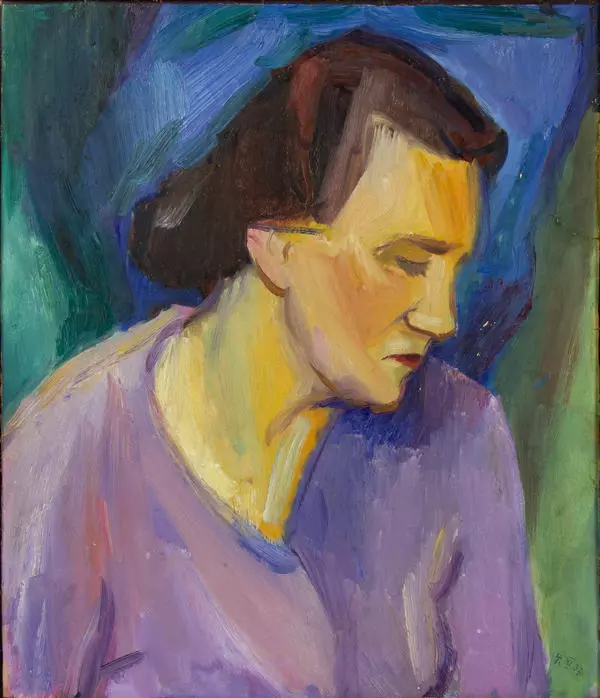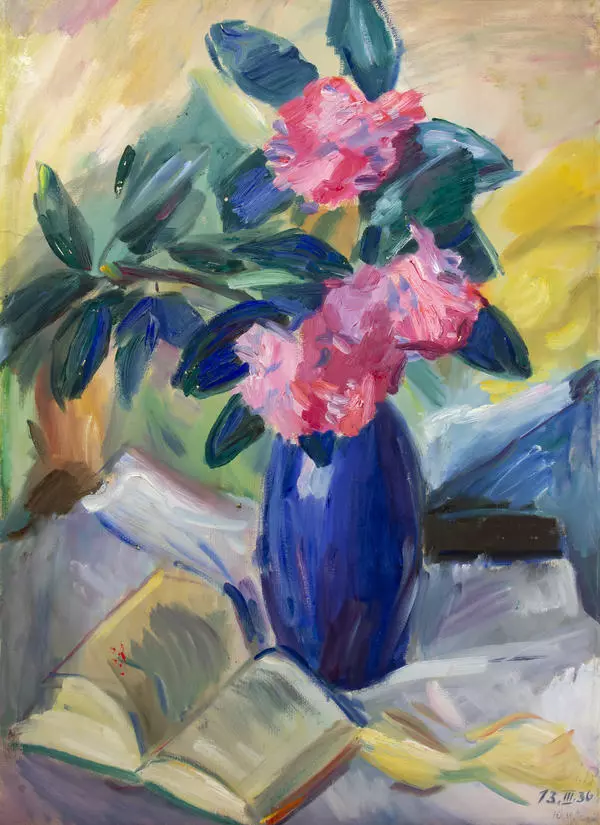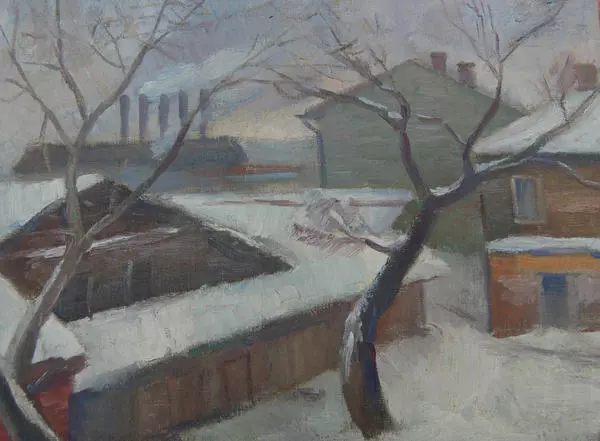Jurgis Preuss painted the Still Life with a Blue Vase in 1962. The title was given to the picture by art scholars. The artist signed his work differently – the title he left on the canvas-stretcher was At the Window. The still life shows a table after breakfast lit with sun light — a blue glass pitcher, a yellow lemon on a saucer, an empty cup. The colours of each object are bright in the sun rays.
Still Life with a Blue Vase
Время создания
1962
Размер
59x52 cm
59×52 cm
59×52 cm
Техника
Oil on canvas
5
Открыть в приложении#1
Jurgis Preuss
Still Life with a Blue Vase
#2
#3
What makes the still life special is the artist’s expressive brush with its dense-textured dabs. Each one shows the movement of the brush. The artist modelled the volumes with the paint and changed the direction of the brush depending on the planes: for example, he emphasised the vertical parts of the pitcher by straight movements of the brush, while the handle is moulded with soft curved lines.
#4
Preiss used juicy open colours in the still life. They reflected the high spirits characteristic of that period of his life.
The Still Life with a Blue Vase was painted during the Kemerovo period of the artist’s life – from 1956 to 1984. There he married for the third time and the marriage proved happy – he lived happily and in harmony with his wife Lyubov Biryukova for 21 years. Together, they brought up Lyubov’s daughter who became Jurgis Preuss’ heiress.
Lyudmila Biryukova reminisced that at first she had not accepted old man Jurgis: ‘…simply, he did not seem like “one of us”. I was exemplary all over - a Komsomol member, a patriot, an honours pupil at school. And he … Here he would grumble about benches in a public garden painted the wrong colour (“couldn”t our housing maintenance administration have found a different paint, not so ugly? ”), there he would criticise our artists (“their favourite pastime is drinking, they don”t know anything, haven’t read anything’). I resented it – everything ours is the best, no matter what! Later, I understood – he was a man of a different culture, a different level of education’ — quoted from an article by Olga Strauss in the Kuzbass newspaper.
Indeed, Jurgis Preiss was a man of a different culture: before taking the Soviet citizenship he had travelled a lot, had spoken to Pablo Picasso, had seen Bertolt Brecht, he valued the art of impressionists and post-impressionists.
In Kemerovo, he had his last creative period. At that late stage, he often painted still lifes and women’s portraits in a manner which he had begun developing in Europe back in the 1930s. In his late vibrant still lifes, he went back to using deep-toned colours, expressive dabs of paint and bright colour contrasts.
The Still Life with a Blue Vase was painted during the Kemerovo period of the artist’s life – from 1956 to 1984. There he married for the third time and the marriage proved happy – he lived happily and in harmony with his wife Lyubov Biryukova for 21 years. Together, they brought up Lyubov’s daughter who became Jurgis Preuss’ heiress.
Lyudmila Biryukova reminisced that at first she had not accepted old man Jurgis: ‘…simply, he did not seem like “one of us”. I was exemplary all over - a Komsomol member, a patriot, an honours pupil at school. And he … Here he would grumble about benches in a public garden painted the wrong colour (“couldn”t our housing maintenance administration have found a different paint, not so ugly? ”), there he would criticise our artists (“their favourite pastime is drinking, they don”t know anything, haven’t read anything’). I resented it – everything ours is the best, no matter what! Later, I understood – he was a man of a different culture, a different level of education’ — quoted from an article by Olga Strauss in the Kuzbass newspaper.
Indeed, Jurgis Preiss was a man of a different culture: before taking the Soviet citizenship he had travelled a lot, had spoken to Pablo Picasso, had seen Bertolt Brecht, he valued the art of impressionists and post-impressionists.
In Kemerovo, he had his last creative period. At that late stage, he often painted still lifes and women’s portraits in a manner which he had begun developing in Europe back in the 1930s. In his late vibrant still lifes, he went back to using deep-toned colours, expressive dabs of paint and bright colour contrasts.
#5
Kemerovo Regional Museum of Fine Arts
читать дальшескрыть
00:00
00:00
1x
Still Life with a Blue Vase
Время создания
1962
Размер
59x52 cm
59×52 cm
59×52 cm
Техника
Oil on canvas
5
Открыть в приложении
Поделиться

